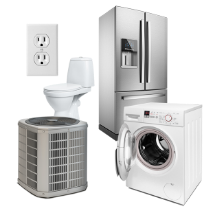Any sort of auto-function seems like a blessing at first glance. Unfortunately, when it comes to self-cleaning ovens, there are drawbacks that can outweigh potential advantages. Before you thoughtlessly activate your oven’s self-cleaning option, learn the benefits, advantages and potential risks.
The Benefits of a Self-Cleaning Oven
- Convenience: This is the most obvious benefit to self-cleaning ovens. Instead of having to spend hours scrubbing and scraping food residues, you can relax or concentrate on other household duties. That said, you should expect a minimum amount of hand-cleaning before you begin the self-cleaning process.
- Safety: Self-cleaning ovens allow users to avoid toxic chemical cleaners and solvents. In most cases, you will only need a damp cloth combined with baking soda or lemon juice to finish up the job.
- Energy-efficiency: If you run your oven after cooking a meal, you can reduce the overall energy costs. To enjoy measurable benefits, however, you shouldn’t use the self-cleaning function more than six times a year.
The Disadvantages of the Self-Cleaning Feature
- Smoke and Odors: Self-cleaning ovens utilize very high heat to cook away grease and food buildup. This process almost always results in foul odors and smoke. If the unit is particularly dirty, it is likely to smoke excessively, setting off smoke alarms and causing irritation to the lungs and eyes. Smoke is most common in ovens stained with sugary foods.
- Dangerous: Because they reach extremely high temperatures, self-cleaning ovens are very hot to the touch. This means they cannot be left unattended whenever pets and children are at home. Birds are particularly sensitive to gas and smoke, so it’s best to remove them during the process. If you or your children suffer from asthma, the self-cleaning process could also trigger an attack. There is also a fire risk that requires users to supervise the process.
- Not a Complete Process: Even if your oven has first-rate self-cleaning capabilities, you will still need to do some of the work yourself. Expect some hand cleaning around the door edges, seal and frame. You will also need to chisel away large chunks of food particles before turning on the self-cleaning function. Racks will also need to be removed and hand washed, since high temperatures could damage them.
- Risk of Damage: Newer ovens have hidden heating elements above the oven ceiling and beneath the oven floor. While this is a nice improvement over older models, it can make it more difficult to keep air circulating and vent the heat from those elements. This can be a particular problem when temperatures exceed 1000° Fahrenheit. In certain instances, control panels can burn out and fuses can pop. When problems do occur, hidden heating elements can lead to higher repair costs.
Should I Use My Oven’s Self-cleaning Feature?
If convenience is your ultimate goal, your oven’s self-cleaning option may be too difficult to resist. If you’re dead set on using this function, consider running it for a small amount of time, such as an hour instead of several hours. This can reduce the risk of problems, while still providing adequate benefits. You should also follow the oven manufacturer’s self-cleaning guidelines and take precautions to ensure that you and your family are not exposed to irritating or dangerous fumes.
2-10 HBW offers the most comprehensive coverage for homeowners. Let us help you get started with a Home Warranty Service Agreement today!








